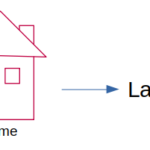More compost
Premade plastic bins are great for newbies and for those who demand a slick visual appearance in the garden. But ours is a culture which has been so completely out-of-touch with natural cycles and growing things; we have lost our sense of scale. As we move into much larger-scale food production, we soon realize how very small those preformed plastic bins are. As your garden grows in size, so will your compost needs. You will have to dramatically increase the volume of your compost production in order to keep up.
At the Community Garden at Holy Nativity, Gene runs three large open piles, each the size of a small car. Our garden is approximately ### square feet (including paths). Even with Gene’s incredible production – and he runs a fast, hot pile that is done within mere months – we still run out. We still have occasions when we must go purchase compost from the garden center
As you plan for high-yield vegetable production, your compost plans will have to expand too. You will need to allow adequate space in your garden to grow this soil nutrition. And you’ll need a continuous flow of materials to make into compost. At this point, John Jeavons’ “Carbon Farming” ideas start sounding really smart. Jeavons recommends that 60% of your growing area be planted in “carbonaceous materials” – dual-purpose seed and grain crops. His proposal produces some food, plus a lot of the necessary carbon material for your compost pile. Jeavons’ books contain vast charts laying out which crops maximize compostable materials for each given 100 square feet of growing space. (J)
Most gardeners who compost in large volume maintain three piles. One pile is “open,” receiving inbound new material from garden and kitchen. The second pile is “closed,” digesting. The third pile is “finished,” and is headed outbound. It is in the process of being used and integrated into the garden. This pattern creates an ongoing cycle.
At the Community Garden at Holy Nativity, when the “open” pile has a sufficient mass of material, Gene will close the pile to allow it to digest. He monitors the decomposition process of the digesting pile and will inform us when the next pile has finished and is ready to use.
Linda Woodrow adds another element into her system – her chickens. Wooodrow builds her piles right in her garden, at the edge of her growing beds. When the pile has finished decomposing, she opens the wire enclosure, dumping the composted contents directly onto her garden soil. She then moves her portable chicken enclosure onto the space. The birds scratch and nibble, and in the process they do the work of tilling her garden soil and turning in the compost for her. (W)
Again, as your compost consciousness advances, you’ll realize that the preformed plastic bins are too small. To attain critical mass so that the inner core of your pile heats up, your pile should measure a minimum of 3 feet in each dimension.
In my home composting, although my husband does use 3 of the small preformed bins, we use a powerful compost accelerant: chicken poop. The addition of soiled chicken bedding to our composting cycle has given a powerful boost to our compost temperatures. Our piles run hotter and compost finishes in a much shorter period of time.
At the Community Garden at Holy Nativity, Gene makes sure that we cover any exposed surfaces with soil, topped with dry material such as straw or dry grass clippings. See our garden webpage for a photo essay on how Gene builds a pile in the style of Jeavons and Alan Chadwick[i]. And refer to John Jeavons’ How To Grow More Vegetables for how to layer a pile for optimal decomposition.
[i] Gene’s Composting Workshop photo essay is linked from http://envirochangemakers.org/CommunityGarden.htm#Classes

